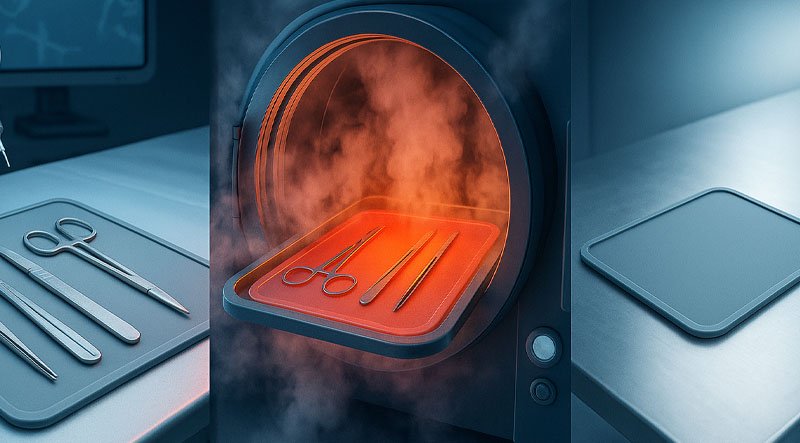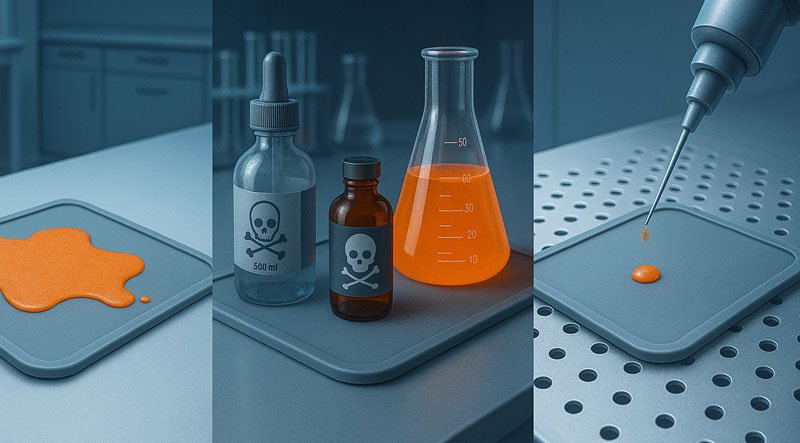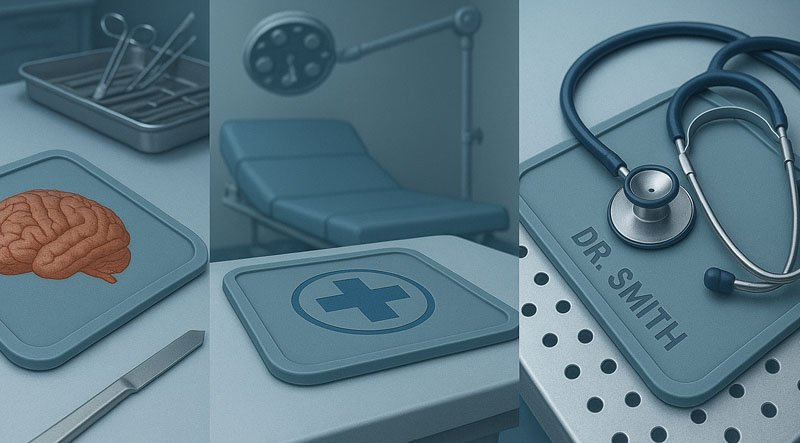Labs and hospitals face daily risks from contamination and harsh chemical exposure, threatening patient safety and experimental integrity. Could sterilizable, chemical-resistant silicone mats provide an ideal solution?
Sterilizable and chemical-resistant silicone mats are vital for labs and hospitals because they withstand rigorous sterilization methods, protect surfaces from harsh chemicals, and maintain hygiene standards. Their resilience ensures long-term durability, reduces contamination risks, and supports critical medical and laboratory operations.
Yet, there’s much more to uncover about the role these silicone mats play in healthcare and research environments. Let’s explore their essential characteristics and how they can greatly enhance safety and efficiency.
Why Is Sterilization Compatibility Crucial for Medical and Lab Silicone Mats?
Hospitals and laboratories must maintain sterile environments to prevent infections and ensure accurate results. Can silicone mats reliably endure frequent sterilization?
Sterilizable silicone mats are specifically designed to tolerate repeated exposure to autoclaving, chemical disinfectants, or radiation without degradation. This durability prevents contamination, improves safety, and extends product lifespan significantly.

Importance of Sterilization Compatibility
In healthcare and research settings, sterilization is essential to protect patients, staff, and sensitive samples. However, many materials deteriorate under sterilization processes, causing risks of contamination. The table below outlines sterilization methods and silicone mat compatibility:
| Sterilization Method | Temperature Range | Impact on Silicone Mats |
|---|---|---|
| Autoclave (Steam) | 121°C to 134°C | Excellent resilience, minimal wear |
| Ethylene Oxide Gas | Ambient to 55°C | No chemical degradation |
| Chemical Disinfectants | Ambient | High chemical resistance |
| Radiation (Gamma, UV) | Ambient | Excellent resistance, no degradation |
How Silicone Mats Maintain Sterility
Silicone mats maintain their structural integrity even after frequent sterilization due to their inherent material stability. Here are three key benefits I’ve observed in medical and lab facilities:
- Reliable Hygiene: Consistent sterilization prevents microbial buildup, ensuring clean work environments.
- Extended Lifespan: Mats remain durable after numerous sterilization cycles, reducing replacement frequency.
- Safe Surface Protection: Protects sensitive equipment from contamination risks, safeguarding critical operations.
In my work supplying silicone mats to medical labs, I’ve seen firsthand how their durability under sterilization significantly cuts down contamination incidents. Facilities benefit from fewer disruptions and more consistent compliance with strict healthcare regulations.
How Do Chemical-Resistant Silicone Mats Enhance Safety in Labs and Hospitals?
Chemicals used daily in labs and hospitals pose threats to equipment, surfaces, and even human health. Can silicone mats effectively shield against these hazards?
Chemical-resistant silicone mats protect surfaces from aggressive chemicals, solvents, acids, and disinfectants. Their chemical stability safeguards equipment and personnel, reduces maintenance costs, and prevents damage from hazardous spills.

Common Chemical Hazards in Labs and Hospitals
Healthcare and lab settings regularly handle hazardous substances. Common risks include:
| Chemical Type | Risk Level | Possible Damage |
|---|---|---|
| Solvents | High | Surface erosion, contamination |
| Acids/Bases | High | Corrosion, equipment destruction |
| Disinfectants | Moderate | Gradual material degradation |
Silicone mats resist chemical damage, making them ideal for long-term use in harsh environments.
Why Silicone Mats Excel in Chemical Resistance
Silicone’s chemical structure prevents reactions with most chemicals commonly used in healthcare and laboratories. Key reasons for silicone mats’ superior chemical resistance include:
- Inert Material: Chemically stable, preventing reactions or absorption.
- Non-Porous Surface: Easy to clean, minimizes chemical penetration and contamination.
- Long-Term Durability: Maintains structural integrity even after repeated exposure to harsh chemicals.
Facilities using chemical-resistant silicone mats report reduced operational downtime and decreased maintenance costs. I’ve personally assisted several hospitals in switching to these mats, resulting in safer environments and significantly lower replacement rates.
What Customization Options Are Available for Medical and Lab Silicone Mats?
Every laboratory or medical facility has unique operational demands. Can silicone mats be tailored to these specialized requirements?
Medical and lab silicone mats are highly customizable, including size, thickness, surface textures, sterilization indicators, and color coding. This flexibility ensures mats precisely meet compliance, workflow, and safety needs, significantly enhancing operational efficiency.

Popular Customizations and Applications
In my experience, customized silicone mats dramatically improve workflows in medical and research settings. Below are common customization options we’ve provided:
| Customization Option | Description | Application |
|---|---|---|
| Dimensions | Tailored to specific workspace needs | Equipment placement, laboratory bench lining |
| Surface Texture | Smooth or textured for grip | Tool stability, easy sample handling |
| Color Coding | Specific colors for area identification | Contamination prevention, workflow organization |
| Sterilization Indicators | Visual indicators for sterilization completion | Compliance assurance, reducing errors |
Benefits of Customizing Silicone Mats for Medical and Labs
Customized silicone mats offer multiple operational benefits. I’ve observed clear improvements such as:
- Enhanced Organization: Customized mats improve workflow, organize instruments, and optimize space.
- Compliance and Safety: Visual indicators and specialized features ensure strict adherence to safety protocols.
- Brand Visibility and Professionalism: Customized mats improve professional appearance and reinforce institutional branding.
I’ve seen significant positive impacts when laboratories implement customized silicone mats. Operational efficiency improves immediately, errors decrease, and safety compliance rises noticeably.
Conclusion
Sterilizable and chemical-resistant silicone mats are indispensable in medical and laboratory settings. Their robust sterilization compatibility, chemical resistance, and customization options substantially enhance safety, hygiene, and operational efficiency.